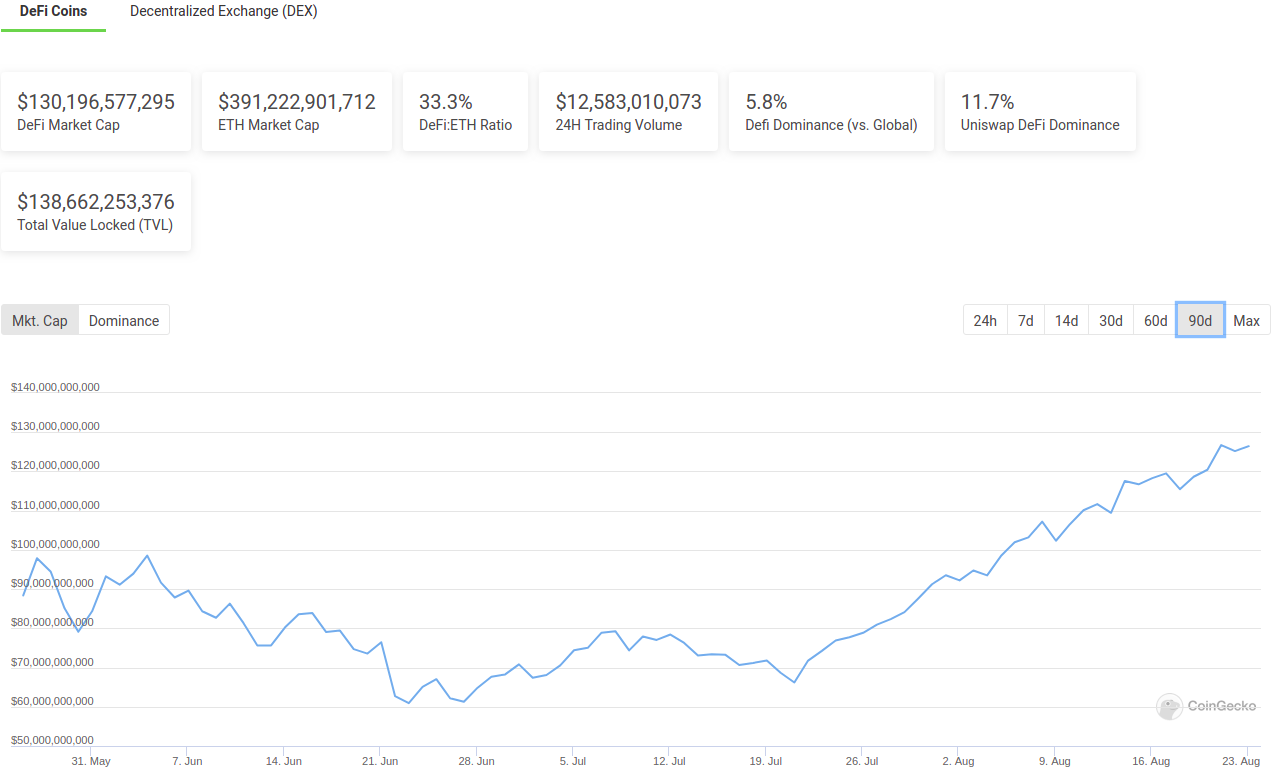Recurring market commentary on what's happening in the crypto markets, summarized by the Crypto Broker team at Crypto Finance AG.
Market commentary
Good Morning!
Today is fixed income day.
During the first DeFi hype, there were almost no projects that focussed on fixed income. But now in the second wave, we are seeing a few very promising projects with interesting products.
In my opinion, the project that demonstrates the great advantage of DeFi due to the almost unlimited composability is pendle.finance. It is not that they are doing something groundbreaking, but they have figured out how to strip (or tranche) different income or risk premiums and make them easily investable and tradable.

But first, you might be asking yourself what I mean by tranches?
And what potential do they have, if done right?
Just to clarify, pendle.finance is not the only project that masters tranches in the DeFi sector. Maybe the best comparison is to consider structured products from the traditional finance world. The most common ones are so-called “yield enhancement” products, where the client invests fiat that gets placed as a money market, plus selling an option. Usually, the client does not know that there are two easily tradable products (money market and an option) wrapped into that yield enhancement product. Due to that fact that banks are taking a large margin cut out for themselves, the client is not rewarded fairly for the capital they invest.
This is different in the DeFi space. The different investment components are freely available and have transparent pricing. Everybody with some financial knowledge can put together their own structured product. The components (or, as I like to call them, risk premiums) are not always that easy to peel out. But protocols such as pendle.finance make it happen.
Now, back to the topic of what those tranches or risk premiums are exactly.
First, those tranches split an investment into different portions of risk/reward profiles.
Let’s have a look at tranche “A”.
Bob is a risk averse guy (i.e. as a typical bond holder, he does not like stocks). He wants to invest USDC 100k for 1 year, but would like to get a fixed rate on it. Fixed rates are usually lower due to the fact that you are willing to give away the upside of a potentially higher yield (you have a guaranteed return). In the traditional world, fixed rate yields are usually higher due to the cost of capital and liquidity (your money is locked in for a longer period of time, which increases the yield for the investor).
Tranche “B”
A decentralised yield protocol (e.g. yearn.finance) has a solution for Bob. On the platform, Bob can invest his USDC 100k to get a 10% fixed yield for 1 year. This will result in a payout profile of USDC 100k capital, plus USDC 10k in interest. This is great for Bob, but it is very risky for yearn.finance to offer this without a hedge. This is because if yearn.finance is not able to generate 10% on Bob’s USDC, they are required to cover the shortfall. To mitigate the risk, they sell the risk (or tranche) to someone who is willing to take on more risk. In return, they have a better potential reward (than Bob).
Yearn.finance offers this risk and has found Rita. Rita is willing to buy the USDC 10k dept from Bob’s investment in exchange for any extra return that the variable yield protocol (in this case yearn.finance) produces with Bob’s capital.
How would the payout scenarios look like after 1 year?
Scenario 1 – The final yield is 12% (higher than Bob’s fixed rate).
Bob is relaxed as usual and is getting his expected payout of 10% interest plus capital back on his Metamask. Due to the fact that the protocol was able to generate more than Bob’s 10%, Rita will be handsomely rewarded in relation to the capital she put at risk. She invested USDC 10k, and her payout is USDC 3,200 interest plus the invested capital, which is a yield of 32%.
Scenario 2 – The final yield is 8% (lower than Bob’s fixed rate).
Bob, relaxed as always, is getting the10% yield he locked in at the beginning of his investment plus his capital back on his Metamask wallet. Rita, on the other hand, is bearing the loss of the yield difference. This results in a payout of less than what she initially invested. To compensate the difference between the USDC 10k Bob is receiving versus the generated payout of the protocol with only 8% yield, Rita is only receiving USDC 8,800. Her investment yielded -12%.
If you work in traditional finance, this might also sound familiar to you. Bob’s investment tranche is called a senior tranche and Rita’s is called a junior tranche.
If you followed my explanation closely, you can see that there is a “now it gets ugly” stage in this concept. What is going to happen when a protocol’s generated yield is so low that the difference to the senior tranches cannot be covered anymore with the capital of the junior tranches? This is the part where you need to read the liquidation process very carefully. Not only Rita, but also Bob.
Copyright © 2021 | Crypto Broker AG | All rights reserved.
All intellectual property, proprietary and other rights and interests in this publication and the subject matter hereof are owned by Crypto Broker AG including, without limitation, all registered design, copyright, trademark and service mark rights.
Disclaimer
This publication provided by Crypto Broker AG, a corporate entity registered under Swiss law, is published for information purposes only. This publication shall not constitute any investment advice respectively does not constitute an offer, solicitation or recommendation to acquire or dispose of any investment or to engage in any other transaction. This publication is not intended for solicitation purposes but only for use as general information. All descriptions, examples and calculations contained in this publication are for illustrative purposes only. While reasonable care has been taken in the preparation of this publication to provide details that are accurate and not misleading at the time of publication, Crypto Broker AG (a) does not make any representations or warranties regarding the information contained herein, whether express or implied, including without limitation any implied warranty of merchantability or fitness for a particular purpose or any warranty with respect to the accuracy, correctness, quality, completeness or timeliness of such information, and (b) shall not be responsible or liable for any third party’s use of any information contained herein under any circumstances, including, without limitation, in connection with actual trading or otherwise or for any errors or omissions contained in this publication.
Risk disclosure
Investments in virtual currencies are high-risk investments with the risk of total loss of the investment and you should not invest in virtual currencies unless you understand and can bear the risks involved with such investments. No information provided in this publication shall constitute investment advice. Crypto Broker AG excludes its liability for any losses arising from the use of, or reliance on, information provided in this publication.




